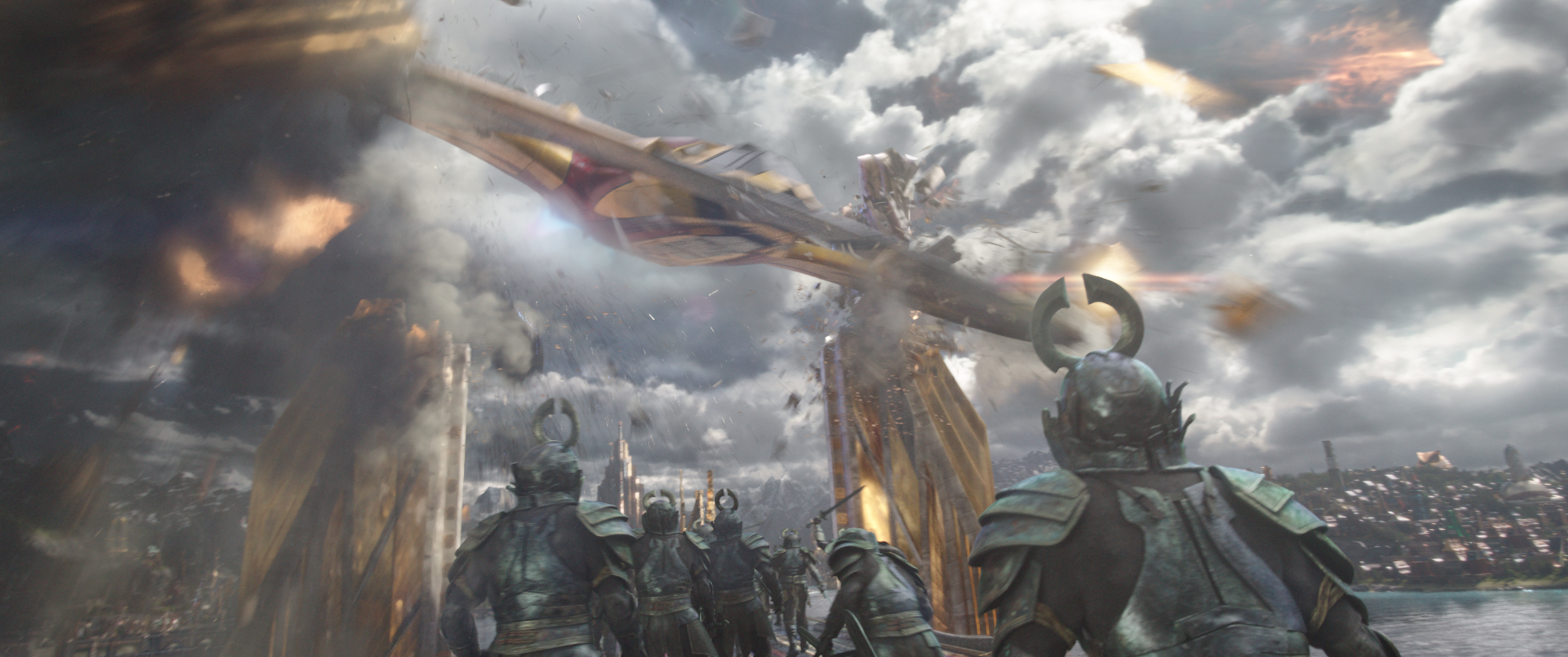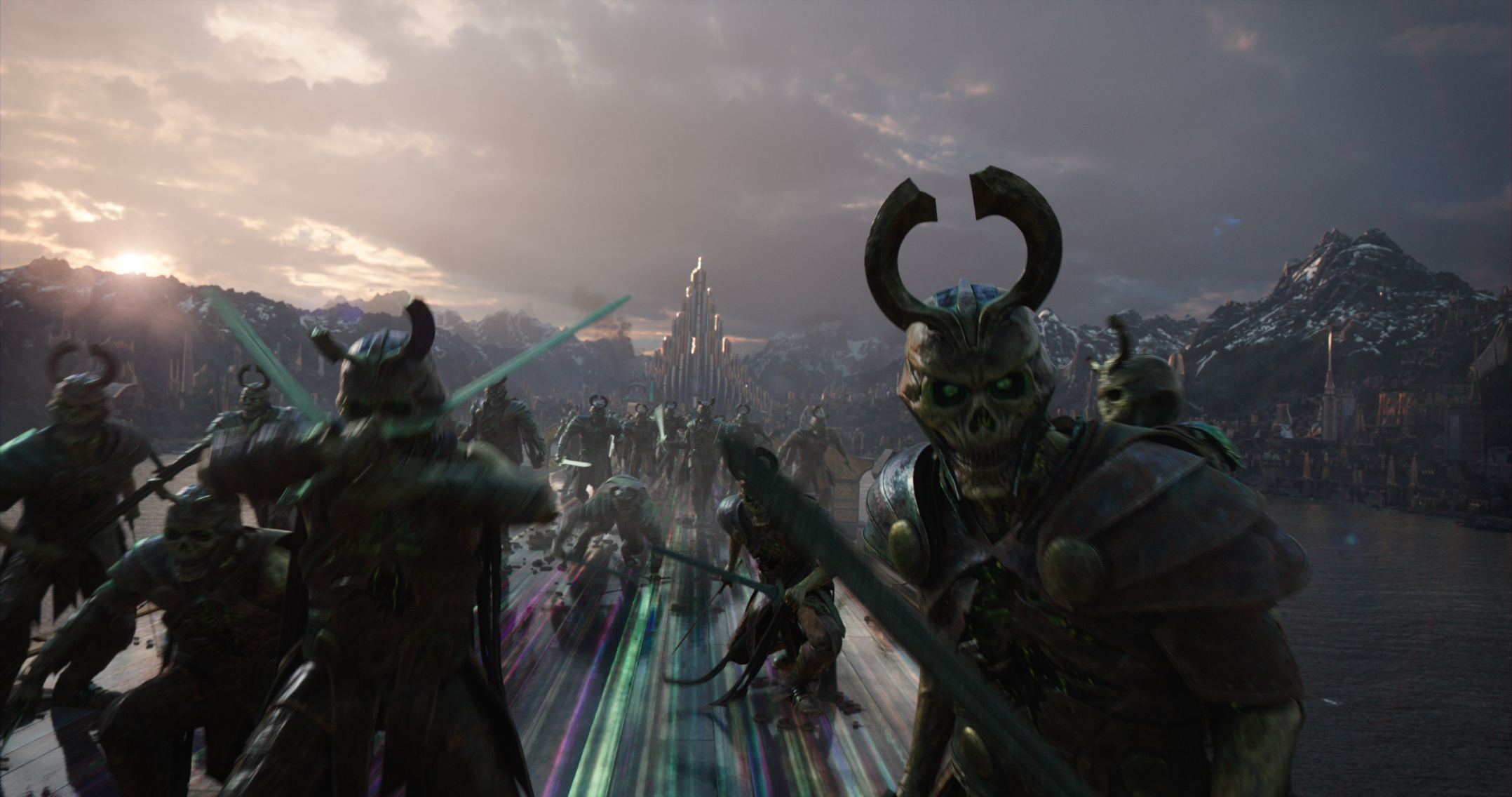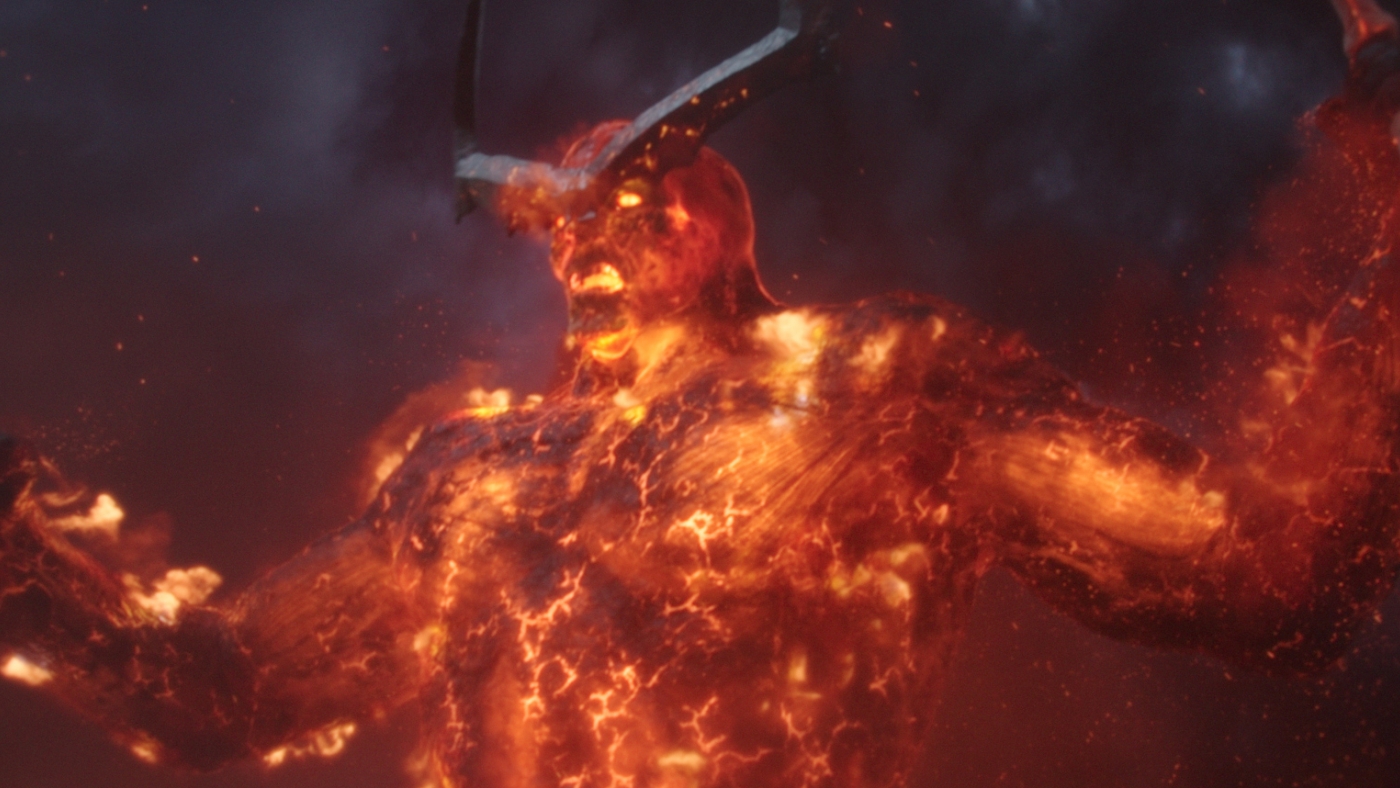When you have to orchestrate a major battle between superheroes and villains and then destroy an entire realm, you better have the right tools for the job.
Luckily Framestore, in realizing the exciting third act of Taika Waititi’s Thor: Ragnarok, delved into its years of experience in effects simulations. Key shots in these final sequences were made possible by relying on Houdini, including fight scenes between Thor and his evil sister Hela, the impact of the giant Surtur creature and the destruction of Asgard.
Action Stations
The third act of Thor: Ragnarok is really about a lot of action. Much of that takes place on Asgard’s Rainbow Bridge, which endures a wealth of destruction. Spaceships crash into it. The Hulk and a giant wolf called Fenris tear it up. It’s here where Thor also summons his lightning powers.

“As a transparent crystalline structure with energy flowing through it,” outlines Framestore FX supervisor Andy Hayes, “the bridge required a little more effort to show the areas breaking apart through a shot. We used Houdini to do this progressive fracturing, and the simulation. Hela herself created magical crystalline structures to inflict damage on the heroes, and to try and capture the Asgardians. These were shot, torn and blown apart in a variety destructive systems.”
Hela has awoken an army of Asgardian soldiers - D-Guards - who help her in the final battle. Shots of them being taken out or destroyed also involved Houdini simulations. “When breaking the D-Guards in Houdini the main challenge was making a character fracture from an animated mesh,” notes Framestore FX artist Jonathan Lyddon-Towl. “We achieved this result by taking the character and putting it into the rest pose. The character was then fractured and the pieces were skinned back onto the original character with a point deformation. This gave us deforming fractured geometry and no changing point or piece count.”


“Bullet prefers simple geometry, so all pieces were reduced down to simpler proxies,” adds Lyddon-Towl. “Each of the packed pieces were treated as static deforming geometry and could be activated where necessary, such as a sword hit or lightning bolt. This gave the overall look and motion of the destruction, from which secondaries were generated as a post process. There was a subtle dust effect which was mostly was for interactive lightning from the lightning bolts and some sword hits. The dust was sourced from the initial fracturing character and advected by the moving pieces.” Like lightning.


At one point, Thor, who has lost his trusty hammer, seems defeated. But he gains a sudden resurgence after summoning new powers and lightning abilities. These built up over time and happened in different stages (they became known as Build up shots, Generic shots and Hero shots), each requiring different approaches from Framestore.
“For ‘Build up’ lightning shots,” outlines FX lightning lead Andreas Vrhovsek, “we specifically placed them bolt by bolt. The bolts had to flow and move in specific ways as directed by the clients. An animation frame was chosen to be the rest position on which the bolts were placed. Simple features were added to our tools, like painting start and end positions, with some additional attributes to give an overall directional and circulatory movement.”
Generic lightning shots were centred more closely on D-Guard fight scenes. Framestore developed a tool that automatically created bolts on Thor’s armour and body, with an artist able to choose how many and how quickly the bolts could move. Another tool added lightning coming off Thor and another character to any other object in the vicinity. “The artist would typically start by defining which asset the lightning was coming from, and set the timing and amount of lightning bolts,” explains Vrhovsek. “They could then chain up other modules of lightning where the shape, timings and motion were enhanced and manipulated. Once a character or object was hit, more modules could be added to create lightning spreading from the impact areas and encapsulating the object.”

Then, the Hero lightning shots were saved for the end of the battle where Thor’s lightning destroys a part of the Rainbow Bridge. This was rendered as a custom modification of existing tools to, as Vrhovsek says, “add a sense of lightning pile-driving down through the structure.”
“Lightning was rendered as points, at least the visual part of it,” continues Vrhovsek. “The points had attributes additionally to the color, transparency and radius which were age, how far it extracted or contracted and unique identifiers to be able to separate them in 2D. The secondary light generated by the bolts was rendered using volumes; encapsulating the area of lightning in a method that our renderer could use more efficiently.”
Surtur Strikes
One of the biggest parts of the sequence, literally, is the presence of the fire demon, Surtur. Having grown to a massive size, Framestore needed to create a monster with a multitude of fiery and crusty surfaces. “Houdini helped generate coordinate systems for the shading team, to drive volumetric structures inside his body and on his surface,” says Hayes. “We used Houdini to prep the surface of Surtur so that we could feed it into our in-house fluid simulator, which handled all of the fire simulations that cover his body.” Surtur (known as ‘Megasurtur’ at this point in the film) ultimately destroys Asgard by piercing its crystalline heart. Here, Framestore crafted animated valleys of cracks on the surface of the world using Houdini that ultimately result in an enormous shockwave. Added to the mix were clouds, plumes and spikes of dust and debris and fire that bursts like gas into space.

“Houdini was used for all of the heavy lifting of destroying Asgard,” describes Framestore FX Lead Sonya Teich. “We used in-house software to do an initial default fracture of every published building, and those pieces were fed into a Houdini RBD setup which produced a ‘destroyed version’ which environments used to create an increasingly razed Asgard as the sequence progressed.”
COMMENTS
lovehacking7531 6 years, 7 months ago |
nice
Please log in to leave a comment.